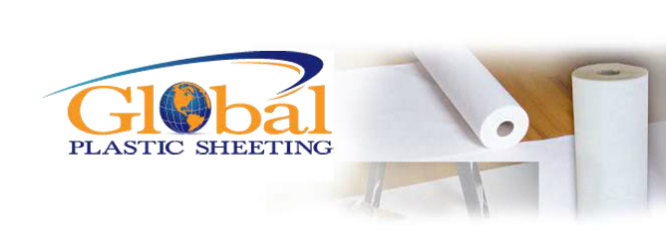Introduction
Nonwoven geotextile fabric is an essential component in various construction and landscaping projects. It plays a crucial role in soil stabilization, erosion control, drainage, and filtration. Unlike woven geotextiles, which are manufactured by weaving fibers together, nonwoven geotextiles are created using needle-punching or heat bonding techniques. This unique construction gives them superior permeability, flexibility, and filtration capabilities, making them ideal for projects that require water movement while preventing soil erosion.
In this guide, we’ll explore the properties, applications, benefits, and installation considerations of nonwoven geotextile fabric.
What Is Nonwoven Geotextile Fabric?
Nonwoven geotextile fabric is a synthetic material typically made from polypropylene or polyester fibers. These fibers are mechanically or thermally bonded to form a permeable, yet strong, fabric. The lack of a structured weave allows water to flow freely through the material while filtering out soil particles, making it a reliable choice for drainage and erosion control applications.
The weight and thickness of nonwoven geotextiles vary, ranging from lightweight materials for simple drainage applications to heavy-duty versions designed for reinforcement and filtration in large-scale projects.
Key Benefits of Nonwoven Geotextile Fabric
- Superior Drainage Capabilities – Allows water to pass through while preventing soil loss.
- Excellent Filtration Properties – Traps sediments while maintaining water flow.
- Soil Stabilization – Helps prevent shifting or settling of soil in roadways and embankments.
- Erosion Control – Protects slopes and shorelines from water and wind erosion.
- Durability and Longevity – Resists UV exposure, chemicals, and biological degradation.
- Flexibility for Easy Installation – Can be easily cut and shaped to fit project needs.
Common Applications of Nonwoven Geotextile Fabric
1. Drainage Systems
Nonwoven geotextiles are widely used in drainage applications such as French drains, retaining walls, and subsurface drainage systems. Their high permeability allows water to flow while keeping soil and sediments from clogging drainage pipes.
2. Roadway Construction
In road and highway projects, nonwoven geotextiles are placed beneath layers of aggregate to stabilize the soil and prevent rutting. They also aid in water drainage, reducing the risk of road surface damage.
3. Erosion Control
Slopes, embankments, and shorelines are prone to erosion due to water runoff and wind exposure. Nonwoven geotextile fabric is used to reinforce these areas, acting as a protective barrier while still allowing water to pass through.
4. Landfill Liners and Caps
Landfills require specialized layers to prevent leachate from contaminating surrounding soil and groundwater. Nonwoven geotextiles help by providing filtration and separation between different layers in landfill applications.
5. Landscaping and Hardscaping
In residential and commercial landscaping projects, nonwoven geotextiles are used beneath mulch, pavers, and gravel to maintain separation and improve water drainage. They also prevent weed growth while allowing moisture to reach plant roots.
6. Retaining Walls
To prevent soil from clogging drainage behind retaining walls, nonwoven geotextiles are installed as a filtration layer. This helps maintain structural integrity by reducing hydrostatic pressure.
7. Pipeline Protection
Pipelines that run underground are often surrounded by nonwoven geotextile fabric to provide cushioning, filtration, and separation from surrounding soil materials.
How to Choose the Right Nonwoven Geotextile Fabric
Selecting the appropriate nonwoven geotextile fabric depends on the specific application and project requirements. Consider the following factors:
- Weight & Thickness – Heavier geotextiles provide better filtration and durability but may not be necessary for all projects.
- Permeability – Ensure the fabric allows adequate water flow for drainage applications.
- Tensile Strength – Higher strength fabrics are needed for reinforcement and stabilization projects.
- UV Resistance – If exposed to sunlight, choose UV-resistant materials to extend longevity.
- Chemical Resistance – For projects involving chemicals, select geotextiles with high chemical tolerance.
Installation Tips for Nonwoven Geotextile Fabric
1. Site Preparation
Before installing nonwoven geotextile fabric, clear the site of debris, vegetation, and sharp objects that could puncture the fabric.
2. Proper Placement
Lay the fabric flat over the designated area, ensuring it extends beyond the boundaries of the project to allow for secure anchoring.
3. Overlapping for Coverage
For larger projects, overlap sections of the fabric by at least 12-18 inches to prevent gaps and ensure continuous coverage.
4. Securing the Fabric
Use landscape staples, stakes, or anchor pins to hold the fabric in place, especially in high-wind areas or sloped surfaces.
5. Backfilling & Covering
Once the fabric is in place, cover it with soil, gravel, or other materials as required by the project to enhance stability and performance.
6. Regular Maintenance
Periodically inspect installed geotextiles to check for damage, wear, or clogging, especially in drainage applications.
Comparing Nonwoven vs. Woven Geotextiles
| Feature | Nonwoven Geotextile | Woven Geotextile |
|---|---|---|
| Structure | Needle-punched or heat-bonded fibers | Woven fabric |
| Permeability | High | Low |
| Drainage Ability | Excellent | Limited |
| Strength | Moderate | High |
| Application | Filtration, drainage, erosion control | Soil stabilization, road reinforcement |
Nonwoven geotextiles are best for applications requiring water flow and filtration, while woven geotextiles provide strength for load-bearing projects.
Conclusion
Nonwoven geotextile fabric is an essential tool in construction, landscaping, and environmental applications. Its ability to filter water, prevent soil erosion, and stabilize surfaces makes it indispensable in modern infrastructure projects. Whether you're working on a drainage system, a retaining wall, or a roadway, choosing the right nonwoven geotextile ensures long-lasting performance and protection.
By understanding its properties, applications, and installation methods, you can maximize the effectiveness of nonwoven geotextiles in your project.


